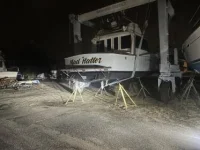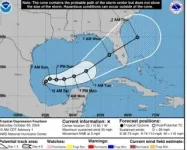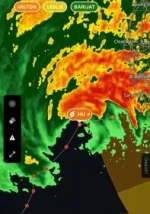Distance is key is avoiding damage in a hurricane, it has been my plan for the last 30 years.
Normally as little as 100 miles is enough especially now that the NHC track forecasts have become so accurate. Here is the first first advisory graphic issued on Saturday. The landfall was spot on within 20 miles and while the storm is still 18 hours away that is unlikely to change. Same with Helene… besides the normal wobbling it made landfall as predicted days earlier.
In Florida we are lucky to have the Okeechobee Waterway which allow quick passage from one coast to the other. That alone can reduce winds by 70-90 knots. All with just a one day trip. Add another 60 miles north or south on the other side and you re in the clear.
Depending on the wording of your policy, your insurance may even cover the fuel. Years ago I had to fly to Nantucket to move a 70 footer I used to run because of an incoming hurricane. Moved the boat to Newport, spent a couple of days there and brought the boat back to Nantucket. The owners insurance covered the fuel and the dockage in Newport. Had the owner needed to hire a captain, they would have the covered the cost.
Back in 2017, there were a a few very expensive boats which stayed behind here in coconut grove for Irma. 70-80 newer Biking and Hatteras sport fish as well as big MYs. When I came back after escaping to the Bahamas with an 84, I was not surprised to see them on the bottom or washed ashore. Even though the marinas here were somewhat sheltered by spoil islands, the forecasted 6’ surge topped the islands leaving 0 protection.
Ian is another example. The corps of engineers even extended the lock hours to allow vessels to move across. Yet hundreds of boats were destroyed.
I hate to say this but I really wish insurers would hike deductibles for storm damage instead of jacking up premiums like they do know. Maybe boat owners would think twice about leaving their boats in the path of a major hurricane.




